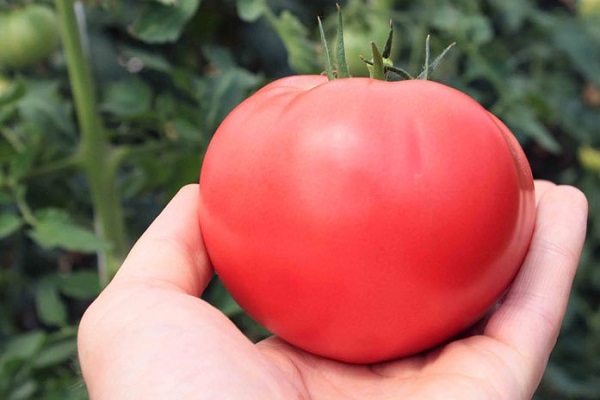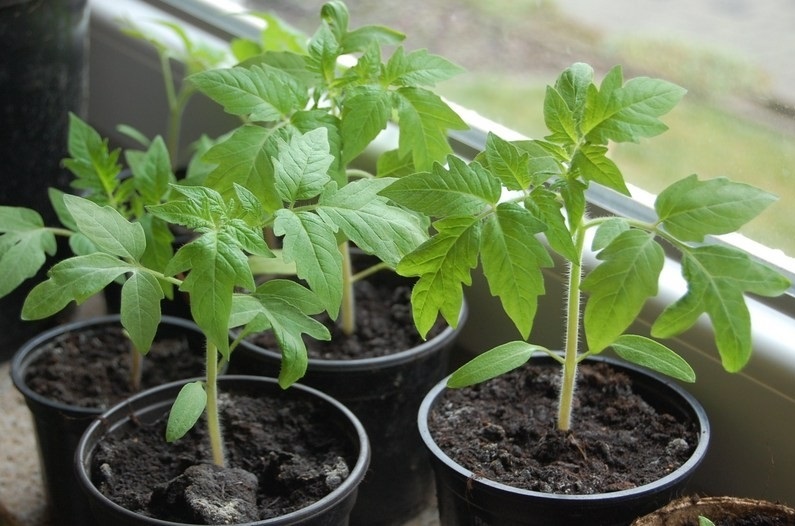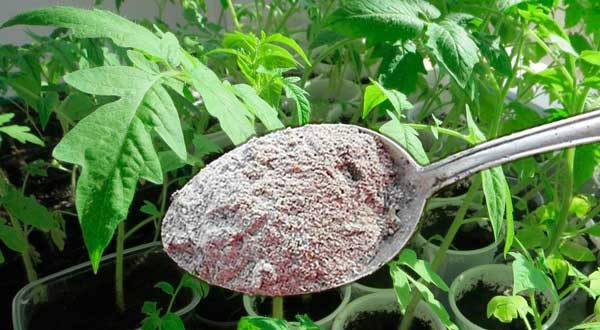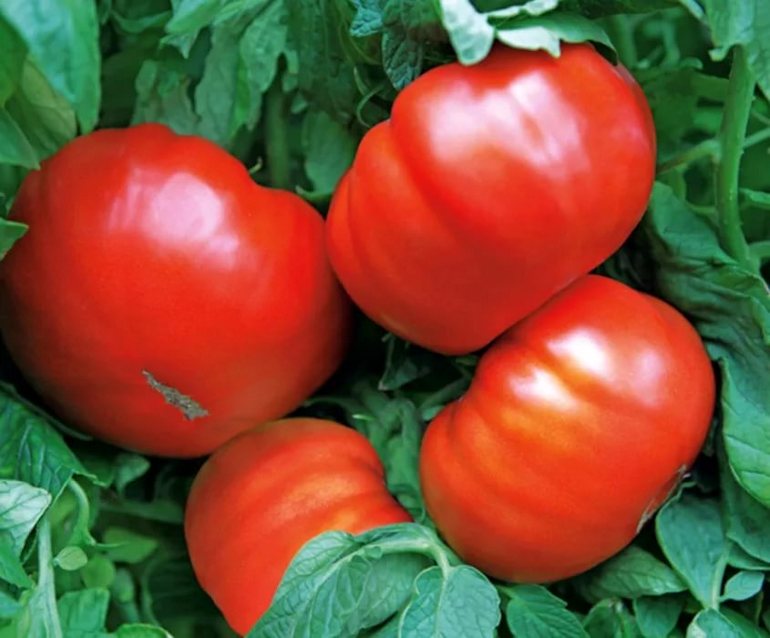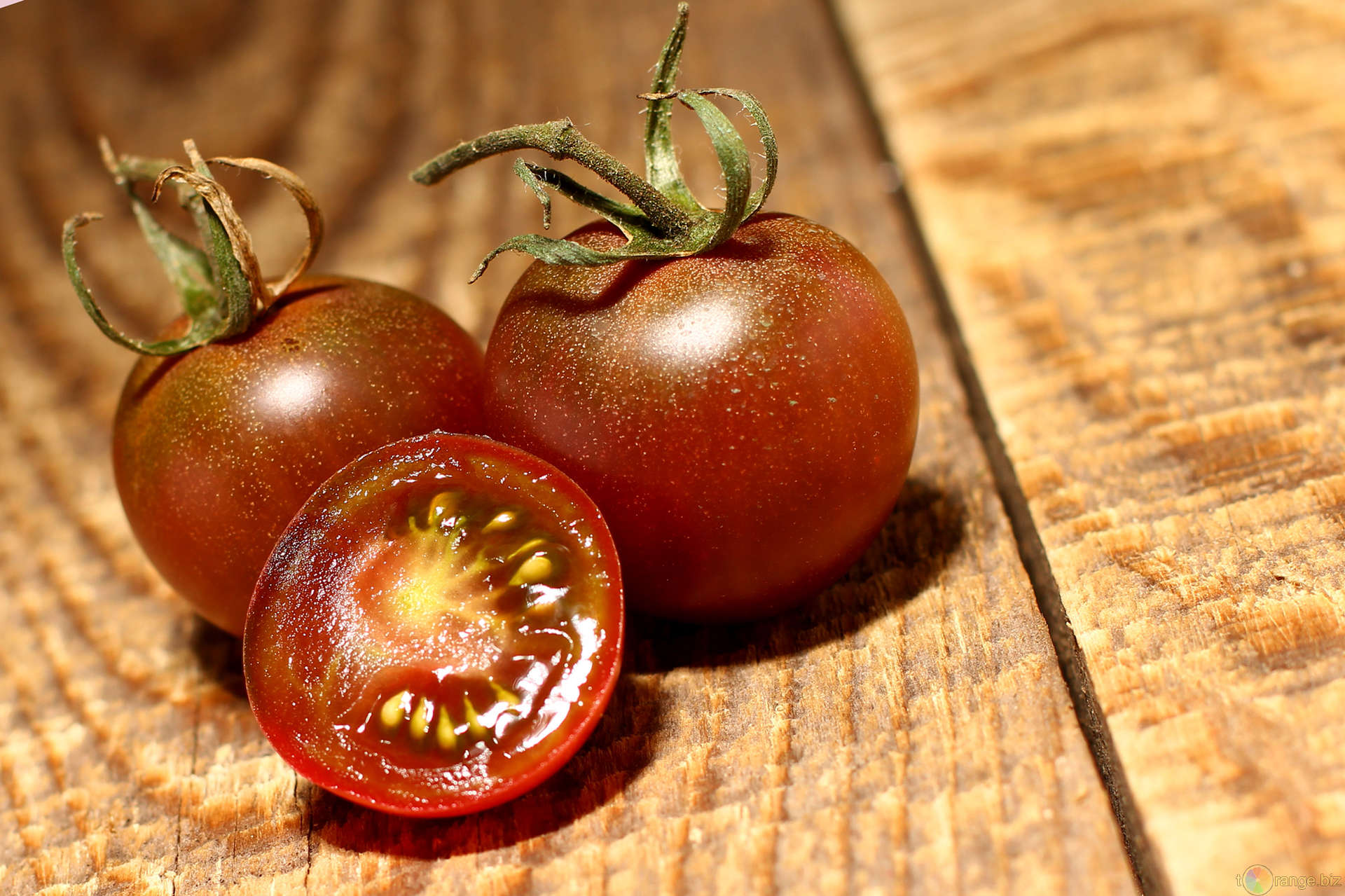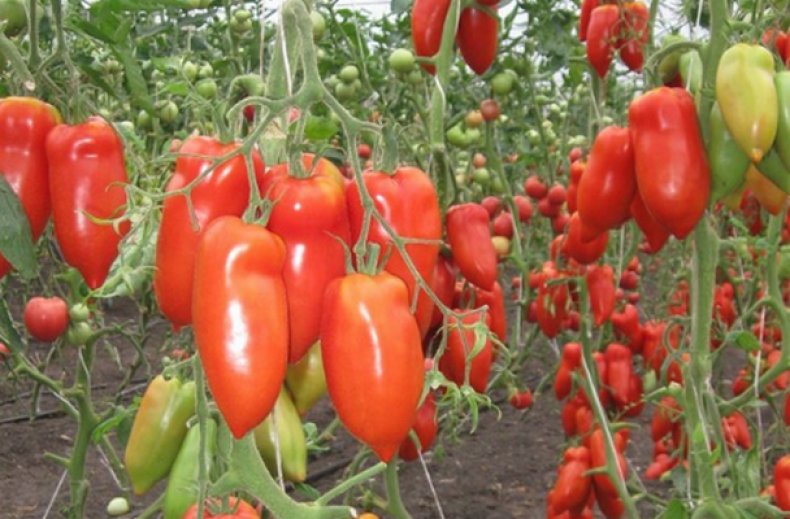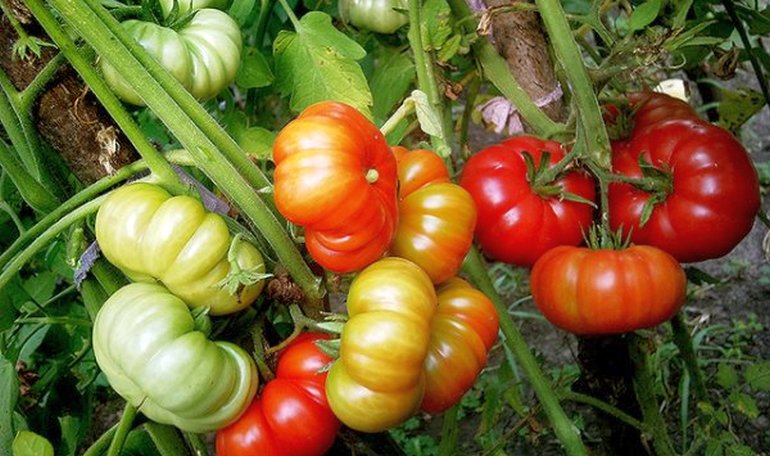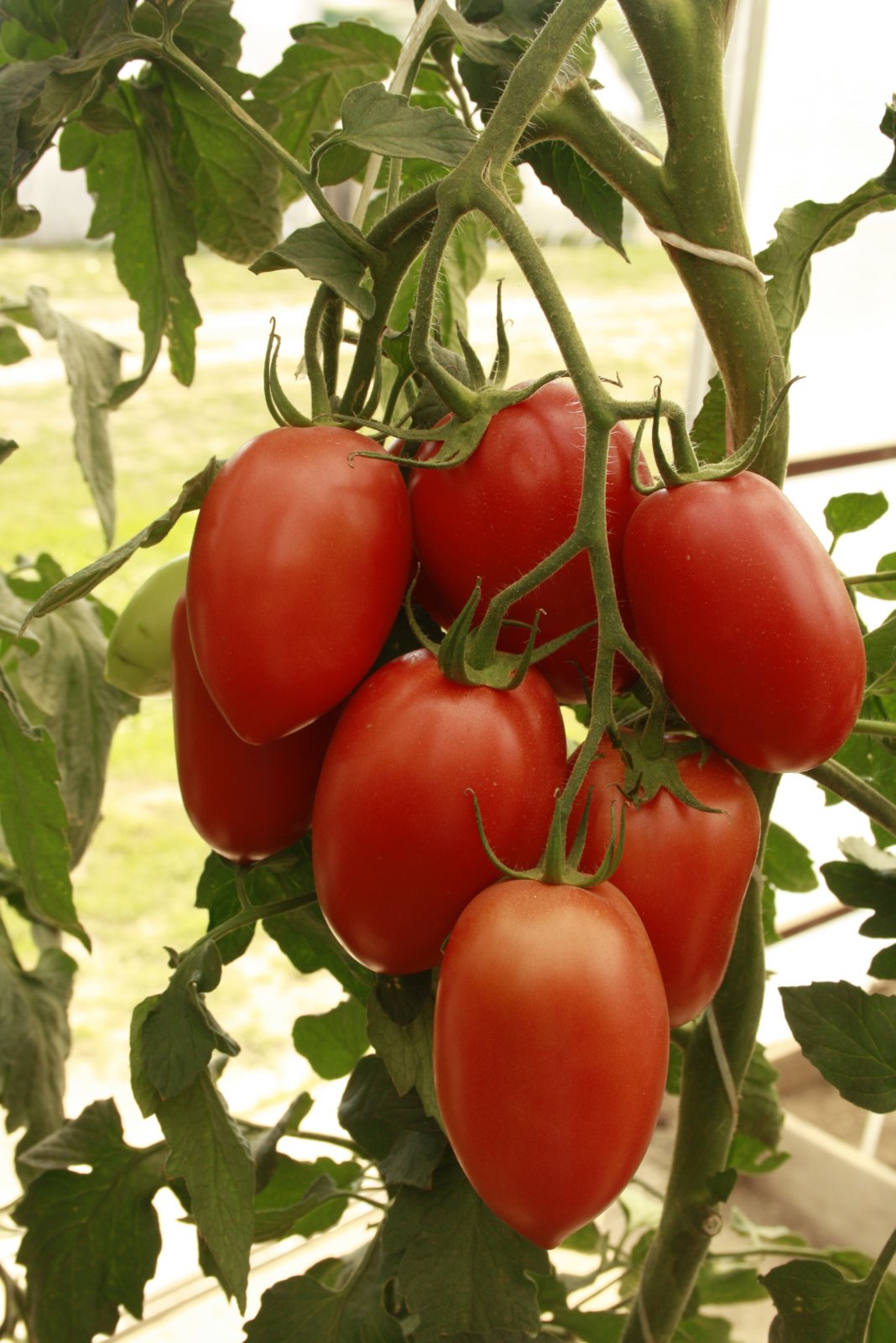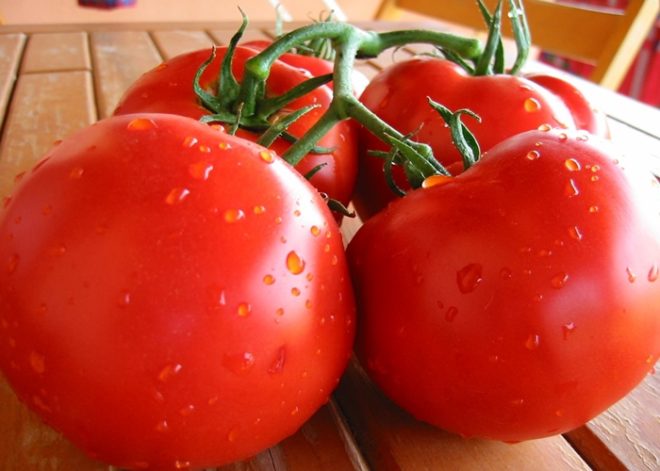Content:
Tomatoes are an essential part of any vegetable garden or greenhouse. The Mashenka variety is in great demand for planting because of the large number of positive properties.
Masha is a variety of tomatoes that was recognized as the best in 2011. It has excellent taste and is considered very useful. Tomatoes contain a large amount of pectins, vitamins, organic acids, proteins, and minerals.
Large-fruited tomato Mashenka characteristics and description of the variety
Tomatoes are characterized by high yields and disease resistance. The variety is grown both indoors and outdoors.
Masha tomatoes description:
- The variety is tall, reaching two meters;
- Mid-ripening - ripening on the 116th day from the appearance of shoots;
- Tomato Mashenka is not susceptible to fusarium, tobacco mosaic, alternaria, late blight;
- High-yielding variety. Collect up to 12 kilograms from the bush;
- The fruits are even and round in shape, flattened at the top and bottom;
- Large tomato: average fruit weight - 250 grams, the largest tomato reaches 600 g;
- The color is uniform, bright red. There are no green spots and blotches on the fruits;
- Four, - or six-chambered;
- Storing tomatoes for only two or three weeks;
- Up to five percent dry matter;
- Sugar is four percent;
- Simultaneous ripening of fruits;
- The skin is glossy and smooth;
- The fruit has a sweet and sour taste;
- The core is fleshy, dense;
- Lots of seeds;
- The variety is indeterminate;
- Does not suffer from temperature changes;
- Flowers do not have nectar and smell, yellow buds. From the moment of planting, the seeds bloom in three months, and the seedlings - after one and a half;
- Pollinate artificially, shaking bushes or attracting bees;
- The leaves are green, medium-sized.
The variety is a hybrid. He is loved for the sweetness of the fruit and the large harvest.
Agricultural technology of cultivation
Planting can be done both by seeds and seedlings.
The type of soil suitable for tomatoes is sandy loam or light loam. Humidity is 50-60 percent. Acidity - neutral, not less than pH = 6.
Landing
Tomatoes grow well in the North Caucasian, Central, Ts.-Chernozem regions. They can also be planted in the Urals, the Volga region, Western and Eastern Siberia.
The beginning of planting for seedlings is March-early April. Usually this period is 60-65 days before moving to the street or greenhouse. They are placed in open ground in late May and early June.
The containers are used for planting seeds, separate or joint. The soil is taken universal for tomatoes. Before planting, seeds and soil are treated with a manganese solution. Saplings are placed in a warm room with a temperature of 20-22 degrees during the day, and 18 - at night.
Water and feed as needed. In May, the seedlings are transferred to a permanent place according to the 65 by 45 centimeters scheme. They are fed 2 or 3 times a season.
With proper planting, special care for tomatoes is not required.
Care
Like all plants, Masha's tomatoes need some procedures for good growth and fruiting.
Care features:
- Top dressing. It is necessary to apply fertilizer 2-3 times during planting seeds for better seedling growth.They are also fed 2 times during the growth of tomatoes in a permanent place. For seedlings, fertilizer is made from yeast: a package of yeast for 2 tbsp. l. sugar is poured into a glass of warm water. Stir, leave for two hours. Water the seedlings with half a liter of solution per 10 liters of water. Prepare the soil in advance: a bucket of peat and sod land per square meter. Fertilizers are added: 0.5 liters of ash, 10 liters of compost (humus), a teaspoon of urea. After transplantation, a complex fertilizer with potassium, phosphorus and nitrogen is applied. Further, it is necessary to feed during flowering and fruiting;
- Diving - transplanting seedlings over a large area (boxes or pots) so that the plants do not stretch out and the root system develops well. This is done when two leaves appear (about 7-10 days). They dive in order to get the harvest faster. A mixture of soil and fertilizers is poured into the pots, poured with potassium permanganate and placed in the soil not very deep;
- Grassing is an agrotechnical procedure for raising yields. Remove excess branches that do not bear fruit and take away nutrients. Stepchildren are unnecessary growths, mainly located between the stem and leaf;
- Tying. It is carried out to a horizontal or vertical support so that the bush does not break under the weight of the tomatoes;
It is necessary to tie up during the entire growth and during fruiting.
- Watering. Produced every 5-10 days. Seedlings are watered at the root, water is already being let in the soil along the furrow. The water should be warm. It is not recommended to water the leaves.
Subject to all care measures, gardeners get large yields.
Pests and diseases
The Mashenka variety has a high resistance to diseases. Of insects, aphids mainly attack.
Control methods:
- Iskra M;
- Confidor;
- Aktara and others.
A scoop caterpillar can also attack a tomato. It eats leaves and multiplies rapidly. For the fight, they use such varieties of chemicals as Koragen, Fastak and others. Butterflies are caught with pheromone traps.
Advantages and disadvantages of the variety
Positive properties include:
- high productivity;
- large mass of fruits;
- good susceptibility to temperature changes;
- resistance to most diseases;
- simultaneous ripening of fruits;
- a large amount of ovary;
- taste characteristics.
The negative sides include:
- the need for pinching and tying;
- short storage - no more than 2 or 3 weeks;
- large yields are only possible in a greenhouse.
Despite some negative aspects in growing Mashenka tomatoes, they are very popular with gardeners and housewives because of their good taste, resistance to diseases and high yields.

